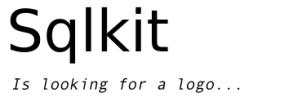Localization¶
localization support comprises:
- localization of number (decimal separators and thousand grouping)
- localization of date/datetime fields
- library messages translation (we need help bu translators, there is a project in launchpad)
- translation of field_name (see below)
Numbers and dates localization is provided by babel
Numbers¶
Numbers are represented according to your locale settings as follows:
| integer: | grouping thousands (format: ‘#.###’) |
|---|---|
| floats: | grouping thousands, no limit on decimal (format: ‘#,###.#’) |
| decimals: | grouping thousands, number of digits according to type.scale (format: ‘#,###.00’, for Numeric(8,2)) |
forcing format representation¶
A different representation can be forced using Number Format Pattern Syntax and setting the new values in the gui_field class via the set_format method that takes a dictionary as argument or the format argument to the widget:
fmt = {
'year' : '#', # don't show thousand grouping
'quantity' : ('#,###.#', 'en'),
}
t = SqlTable(.... format=fmt) # fmt as argument
t.set_format(fmt) # fmt as method
where the two possible forms are shown. If the value is a tuple, the second element is a locale to be used for the representation (as quantity in the example)
Dates¶
dates are formatted according to your locale and the default format is ‘short’ for date/datetime and ‘HH:mm’ for time.
forcing format representation¶
A different representation can be forced using Date Format Pattern Syntax and setting the new values in the gui_field class via the set_format as illustrated above for numbers.
Note
for the time being this only works for SqlTable, SqlMask uses a different widget that needs to be improved, so it’s possible to set a different date format but not using babel.
Temporarily you should set date_format attribute on the gui_field.widget.gtkwidget...
Messages¶
Translation of messages is provided by the standard gettext module. If you’d like to contribute a translation for your language read the README.localization in the distribution folder.
Translation of field_names of each column¶
Since many of the labels that appear in a mask and column headers of a table default to the name of the column, it’s important to add the possibility to translate those strings as well, in order to give to the resulting mask a friendly look.
The same column name may be translated differently in different tables so sqlkit adds a layer in the way of translation via a “label_map” that can be passed directly to the layout object or to the sqlwidget (label_map option).
This label_map is a dictionary whose key is the field_name and the value is a tuple with a description and a help_text to show as tooltip on the label. It instead of a tuple a string is found, it’s considered a label and the tooltip is set to None, Each of these are to be considered msgid that gettext will further try to translate:
{ 'first_name' : ('First Name', 'Write the family name of the director')}
Description and help_text can be stored in the table _sqlkit_field that can be easily edit with sqledit -c URL. Each time a sqlwidget is instantiated it will try to see if any info for the tables it is editing was written in the database and add those to what can be passed to the widget as “label_map”.
Tooltips¶
What we described is also the simpler way to add tooltips to labels and buttons in your layout. This helps delegating to the customer the personalization of the hints he wants to add to the GUI.
In the table _sqlkit_field each row should represent a field of a table, but there’s no harm adding to it more fields that can be the name of buttons or relationships (e.g.: author) just for the sake of translation and tooltip.

